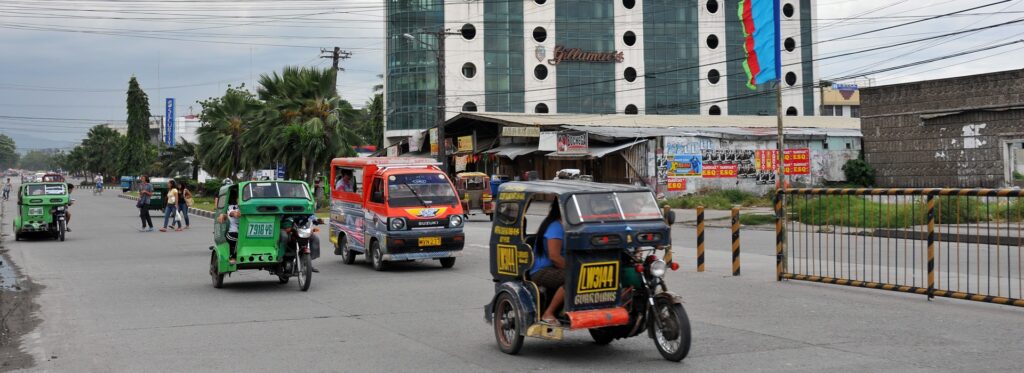In a country of over 7,000 islands, connectivity is as difficult as it gets. Solution? Enter the bangka, symbol of connection and maritime tradition of the Pinay people.
What is Bangka
Bangka is a traditional canoe widely used throughout the Philippines. It is easily recognisable by its characteristic outriggers (also known as katig).
Bangka fulfills a wide variety of purposes in Filipino societies. It is still one of the most used means of transport and fishing. These boats can vary in size and style, depending on the region and the purpose they’re fulfilling.
History of bangka boats
Bangka has a deep and rich history. The first evidence of usage of outrigged boats dates back to Austronesian peoples some 1500–3000 BCE. These people populated the islands of the Philippines, where they continued advancing their boat-building skills and techniques.
In Butuan, an old outrigged boat called balangay has been excavated. It’s the oldest pre-colonial boat ever found in Southeast Asia and is considered to be the precursor of modern bangka boats.
During the colonisation period, the Spanish government tried to suppress local boat building and maritime tradition in order to reduce the risk of revolt and unrest, but bangka culture remained resilient, especially in the south of the country.
Mindanao style bangka
Mindanao bangkas have slimmer and more elongated hulls compared to their northern counterparts. They are also built with a sharper prow and stern. The reason for that is to make them faster and more efficient on long-distance ocean travel.
Despite modernization, bangkas using sails are still a common sight in parts of Mindanao. The reason for that is seafaring tribes such as the Sama-Bajau and Badjao, who still favor the traditional way of ocean travel. For the same reason, Mindanaoan bangkas tend to be more decorated.
How are modern bangka boats built?
Modern bangka boats in the Philippines are built using a combination of traditional methods and contemporary materials. While the general design—narrow main hull with bamboo outriggers—remains the same, the tools, materials, and processes have evolved to improve durability, efficiency, and affordability.
Traditionally, bangka was made out of wood, mainly lauan, tugas, narra, apitong, bangka-bangkaan, and lately, acacia wood is becoming more and more popular.
While traditional wood boat building still exists, the usage of modern advanced materials is on the rise. These materials can include fiberglass, marine-grade plywood, and even steel and PVC.
Purpose of katig
The main purpose of katig is additional balance. Bangkas are made for deep-water travel, and it’s not uncommon for them to face rough sea conditions. Outriggers can be literal lifesavers as they add to the boat’s stability.
In addition to that, katig adds to the flotation capabilities of the boat. Bangkas are usually heavily loaded—be it with fish, cargo, or people—and katig helps distribute the weight over a bigger surface.
Bangka usage
Fishing
It is estimated that more than a quarter of a million municipal fishing vessels operate in Philippine waters, most of which are bangkas—either motorized, sail, or paddle-powered. These small-scale fishers contribute nearly half of the country’s fish catch.
These small-scale fishers are usually the poorest members of society, operating small traditional bangkas, while also being the most negatively affected by the rise of industrial fishing.
The government is trying to support small-scale fishers through programs such as BANGKA KO, GAWA KO, where they aim to equip fishers with modernized fiberglass bangkas to improve safety, efficiency, and income for municipal fishermen.
Transportation
Pump boats (motorized bangka ships) are a vital part of the Philippines’ transportation infrastructure.
Many of the Philippines’ 7,000 islands are quite isolated, and bangkas are the only real connection with the rest of the country for people living there. Without this traditional boat, many people would be without access to employment, schools, or even healthcare.
Aside from passenger transport, bangkas are essential for cargo transport to those isolated islands.
Even in places where ferries are available, a lot of people opt for traditional bangka transport since they don’t depend on predetermined schedules and routes, and are therefore a more flexible type of transportation.
Tourism
Bangka rides are rising in popularity among foreign tourists who find them to be an exotic means of transportation. Virtually all tourist destinations offer island-hopping tours with bangkas.
Traditional bangka rides can be considered eco-tourism since they avoid using fossil fuels and opt for paddle versions.
Bangkas and disaster management
Bangkas have proven to be invaluable in disaster management since a decent-sized fleet can be assembled quite quickly. Bangkas have repeatedly been used to transport humanitarian aid to affected areas or to transport people out of them.
Some of the examples include typhoons Haiyan, Odette, Ulysses, and the Suluan Island tsunami.
Future of bangka
We live in an ever-advancing world where everything changes—so will bangkas. We can expect bangkas to change, adapt, and modernize, but we do not need to be afraid of bangkas disappearing. They are ingrained in Filipino lifestyle and culture to the point where removing them would be simply impossible.

